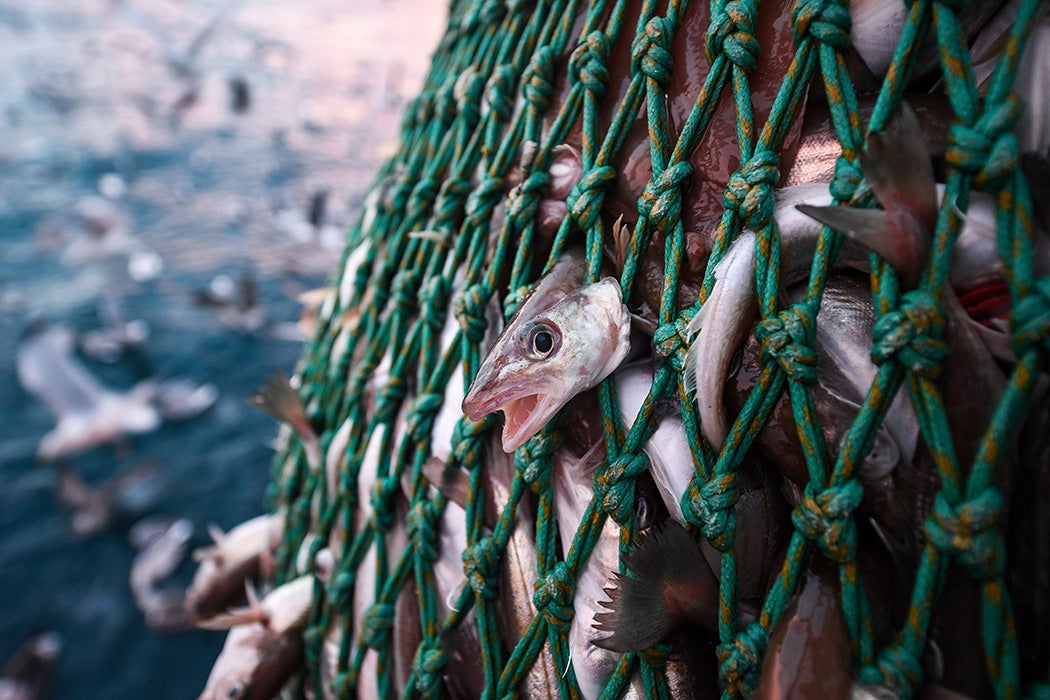Normally, an abundant harvest is a good thing, signaling a productive crop. In fisheries, however, that’s not always the case. In both freshwater and saltwater fishing, it’s not uncommon to capture fish outside the target stock. But harvest of these extra fish can have long-term consequences on species health and stability.
These unintentionally caught fish are referred to as bycatch, “one of the most ubiquitous and crippling challenges in global fisheries” and the subject of research led by Alan Hastings. This study contributes to the ongoing debates on the problem of bycatch and how to restore the health of fisheries. Writes the team, “Although this problem has been well known for 50 y[ears] or more, it remains one of the most pressing challenges in fisheries.”
Bycatch occurs during commercial fishing operations that rely on large nets or trawling techniques. More broadly, bycatch can include other sea creatures as well, such as dolphins, turtles, or even seabirds. The repeated capture of weak stock—bycatch species that are long-lived or have low fecundity and so aren’t able to replace their depleted numbers as quickly as the targeted fish—can threaten a species’ prosperity and even lead to its extinction.
Normally, the strategy to protect these threatened species is minimizing harvests of the targeted fish with the hope that the weaker stock will recover. Alternatively, money might be invested in developing a harvesting mechanism that allows the threatened fish population escape. However, both solutions place economic pressure on the fishing industry.
The research team wondered if there was a different solution. They developed a model focused on a scenario relevant to managers and fishermen: the harvest of a target species is threatened because a bycatch species, the weak stock, has been driven to dangerously low levels. How could they ensure the future of the threatened species while continuing to harvest other desirable fish?
The idealized model suggested that marine reserves could help. A marine reserve is a protected area where fishing is forbidden, with the goal that ecosystems remain undisturbed such that fish can reach and maintain healthy population levels. The incorporation of marine reserves—rather than halting harvests completely—makes this model and research unique. The team wondered: could reserves, with their conservation intentions, aid managers in helping to restore fish to safe, healthy levels?
Interrogation of the model found that in situations where the weak stock is a longer lived fish that is slow to reproduce, marine reserves will help aid population return. While this may seem like a highly specific example, it’s characteristic of the bycatch problem that fisheries routinely face.
Weekly Newsletter
Of course, there are many other attributes and behaviors of fish to consider in other scenarios, but the researchers believe that their results contribute to the discourse on the minimization of the harmful effects of bycatch, noting that “for a wide range of life history combinations, maximum yields are not compromised by spatial closures [reserves] that guarantee the persistence of weak stocks.”
The solution to bycatch may already be in the ocean. Concludes the authors, “Marine reserves may be a solution that simultaneously benefits fishermen and conservation.”
Support JSTOR Daily! Join our new membership program on Patreon today.







